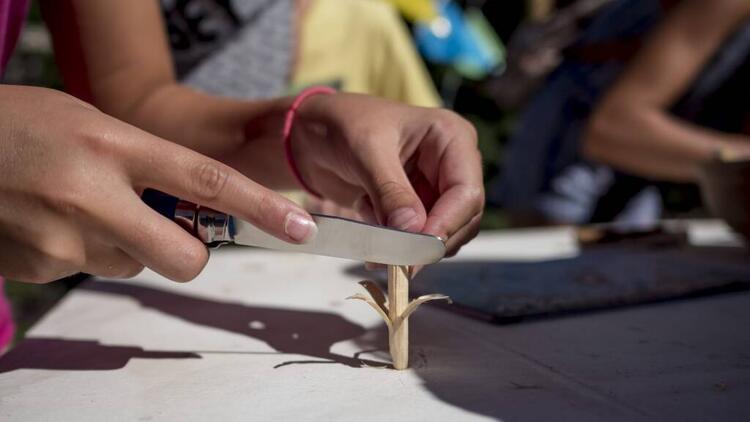
Carving workshop: "Carve your own edelweiss".
Learn how to carve an edelweiss from a wooden log using an Opinel knife made in Savoie, and take your masterpiece home with you!
The edelweiss!
It is called lion's foot, snow star, snow flower, glacier star, silver star, snow immortelle, star cotton, or ink the Queen of the glaciers ...
Its scientific name is Leontopodium alpinum.
It is one of the most famous mythical mountain plants, partly because of its rarity. Its name comes from the German "edel", "noble", and weiß, "white". The word "edelweiss" is a masculine name.
This herbaceous perennial plant is 3 to 20 cm high and grows wild in rocky grasslands on limestone soil, ideally at an altitude of 2,000 to 3,000 meters. The starry crown of the edelweiss is made of five to fifteen bracts whose cottony hairs trap air bubbles reflecting the sun's UV rays.
Edelweiss is used in folk medicine for abdominal pain, angina, bronchitis, diarrhea or dysentery, aerophagia, amnesia, Alzheimer's disease, allergic reactions and alcoholism.
In the past, shepherds used it to cure intestinal disorders of their animals.
Edelweiss is also used by the cosmetic industry for its proven anti-aging properties. Indeed, this plant contains an antioxidant that has the property of slowing down the aging of cells. A quality particularly sought after by all cosmetic laboratories!
Symbol of the Alps :
In the Alps, edelweiss represents purity, love and courage. It was customary for the groom to offer a bouquet to his bride on her wedding day. It is the symbol of adventure and great sacrifice.
Its short lifespan and its location away from the mountain pastures have inspired an important folklore for the inhabitants of the Alps, who have made the Edelweiss a mountain emblem.
Workshops at 2pm - 3pm - 4pm - 5pm.
101 rte du village
74400 Argentière
Nearest train stop: Gare Argentière
Nearby parking lot: La Fiz
